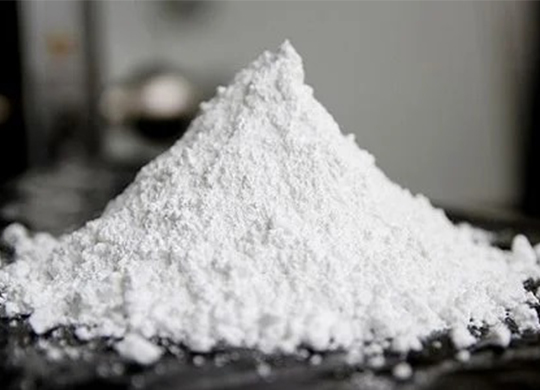

Coated Calcium Carbonate in Ahmedabadis one of the most widely used minerals in various industries, including construction, plastics, paper, and pharmaceuticals. It exists in two primary forms: coated and uncoated calcium carbonate. While both forms share the same chemical composition, they differ significantly in their physical properties, applications, and performance. Understanding these differences is essential for selecting the right type of calcium carbonate for specific industrial needs.
Typical Chemical & PHYSICAL Analysis
|
|
|
|---|---|
| CaCo3 | 98 ± 1 |
| MgCO3 | 2+1 |
| Al-silicate | < 1% |
| Fe2O3 | < 0.1% |
| Moisture | 0.2% (Ex works) |
|
|
|
|---|---|
| Sp.Gravity | 2.7 |
| Bulk Density | 950 gm/lit |
| Oil Absorption | 19% |
| PH of Sat Solution | 8.2 |
| Moisture | 0.2% (Ex works) |
| Particle Size | Average | Top Cut |
| Distribution | 3.0 M | 12 M |
What is Uncoated Calcium Carbonate?
Uncoated calcium carbonate refers to the raw form of calcium carbonate that has not undergone any surface treatment. It is typically obtained from natural sources such as limestone, marble, or chalk. Uncoated calcium carbonate is characterized by its white color and fine particle size, making it suitable for various applications.
Uncoated calcium carbonate is used as a filler in many products, including paper, plastics, and paints. It provides bulk and reduces costs, making it an economical choice for manufacturers. However, its hydrophilic nature can limit its compatibility with non-polar substances, leading to challenges in dispersion and processing in certain applications.
What is Coated Calcium Carbonate?
Coated calcium carbonate, on the other hand, is produced by treating uncoated calcium carbonate with a surface coating, typically stearic acid or other organic compounds. This coating alters the surface properties of the calcium carbonate, making it hydrophobic (water-repellent). The coating process enhances the material's compatibility with non-polar materials and improves its overall performance in various applications.
Coated calcium carbonate is often used in the plastics, rubber, and paint industries, where it serves as a functional filler that improves product characteristics while maintaining low production costs. The hydrophobic nature of coated calcium carbonate allows it to disperse more easily in non-polar mediums, enhancing the quality and durability of the final products.
Key Differences Between Coated and Uncoated Calcium Carbonate
Surface Properties
The most significant difference between coated and uncoated calcium carbonate lies in their surface properties. Uncoated calcium carbonate is hydrophilic, meaning it has an affinity for water, which can lead to clumping or poor dispersion in non-polar materials. In contrast, coated calcium carbonate is hydrophobic, allowing it to mix more effectively with non-polar substances, making it a preferred choice for applications in plastics and rubber.
Dispersion and Compatibility
Due to its hydrophilic nature, uncoated calcium carbonate can struggle to achieve a uniform dispersion in non-polar matrices. This can result in uneven product quality and reduced mechanical performance. On the other hand, coated calcium carbonate's hydrophobic characteristics facilitate better dispersion in non-polar materials, leading to improved product consistency and performance.
Applications
Uncoated calcium carbonate is commonly used in applications where cost reduction is the primary objective. It is frequently found in paper production, where it acts as a filler to enhance bulk and opacity. It is also used in agricultural applications, animal feed, and as a dietary supplement due to its natural properties.
Coated calcium carbonate, however, is favored in industries that require higher performance standards. In the plastics industry, it is used to improve the strength and durability of plastic products while also enhancing their surface finish. In the paint industry, coated calcium carbonate acts as an extender pigment, improving opacity and brightness without compromising quality.
Cost Implications
Uncoated calcium carbonate is generally less expensive than its coated counterpart due to the absence of the additional coating process. This makes it an attractive option for applications where performance requirements are less stringent. Coated calcium carbonate, while typically more expensive, offers enhanced performance characteristics that can justify the higher cost in applications demanding superior quality.
Environmental Considerations
Both coated and uncoated calcium carbonate are considered environmentally friendly materials, as they are derived from natural sources. However, the coating agents used in the production of coated calcium carbonate may vary, and some may raise concerns about environmental impact. It is essential to consider the source of the coating materials and ensure compliance with environmental regulations when selecting coated calcium carbonate for specific applications.
Conclusion
The choice between coated and uncoated calcium carbonate depends on the specific requirements of the application at hand. Uncoated calcium carbonate serves well in cost-sensitive applications, offering bulk and functionality, while coated calcium carbonate excels in scenarios where performance, compatibility, and quality are paramount. Understanding the differences between these two forms of calcium carbonate can help manufacturers make informed decisions, ultimately enhancing product quality and operational efficiency. By selecting the appropriate type of calcium carbonate, businesses can optimize their processes and deliver superior products to their customers. Airotech Minerals is dedicated to providing high-quality coated and uncoated calcium carbonate, ensuring that your business meets its specific needs effectively.
